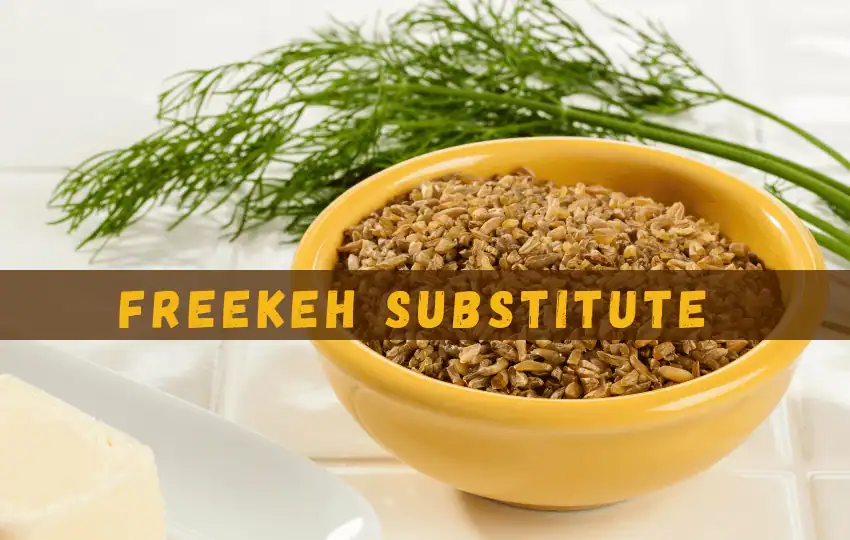Freekeh is a delicious, nutty grain that’s becoming increasingly popular due to its high fiber content and unique flavor. But sometimes, it can be difficult to find in some parts of the world.
If you’re looking for a quick and easy substitute for freekeh, look no further! I am here with 10 great substitutions with their corresponding ratio measurements.
So, let’s get started with your favorite balcony coffee.
In short, "What can I use instead of freekeh?" Quinoa, Bulgur Wheat, Farro, Kamut Berries, Barley, Millet, Wild Rice, Brown Rice, Rye Berries, Buckwheat Groats, Kamut.
What is freekeh, and what does freekeh taste like?
Freekeh is a Middle Eastern grain made from green wheat. It has a smoky, nutty flavor with a texture that’s slightly chewy and tender.
Freekeh has an earthy, robust taste reminiscent of wild rice or barley, and its strong aroma is often compared to freshly milled wheat.
Freekeh can be used in everything from salads to casseroles and soups, making it incredibly versatile.
The unique flavor makes it the perfect alternative to white rice or pasta for those looking for more flavor in their diet.
What are the Uses of freekeh?
Freekeh can be used as the main component of a meal or as part of an accompanying side dish. For example, it can be cooked up with vegetables and spices to make an earthy pilaf.
Alternatively, it can be added to salads, soups, and stews for additional texture and flavor. Freekeh can even be popped like popcorn for a nutritious snack.
The grain’s high nutritional content makes it especially beneficial to add to any diet. Freekeh contains nearly four times more fiber than brown rice, which helps support digestion and reduce cholesterol levels.
Additionally, its low glycemic index helps control blood sugar levels over time, and its protein content helps build muscle tissue efficiently.
Cooking with freekeh is easy since it only needs to be boiled in water for 15 minutes before it softens enough for use in a variety of dishes.
Because Freekeh has such a strong flavor profile, adding just a pinch of salt or other seasonings will enhance the taste without overpowering the dish’s overall flavor profile.
12 best freekeh substitutes
1. Quinoa
I think this is probably the most popular substitution for Freekeh because it’s widely available and has a similar texture.
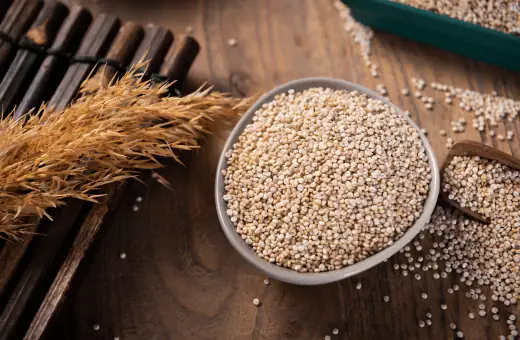
To substitute, Use 1 cup of quinoa to replace 1 cup of freekeh.
2. Bulgur Wheat
Bulgur wheat is similar to cracked wheat in texture, but it’s slightly milder in flavor than freekeh.
To substitute, Use 1 cup of bulgur wheat for every 1 cup of freekeh.
3. Farro
Farro is an ancient grain that’s gaining popularity again due to its nutty flavor and chewy texture.
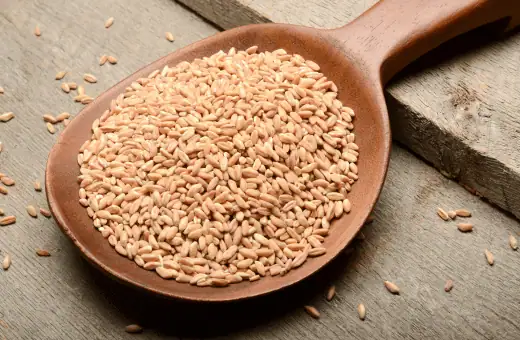
For every 1 cup of freekeh, use 3/4 cup of farro instead.
4. Kamut Berries
Kamut berries have a slightly sweeter taste than other grains like freekeh or farro.
The ratio should be 2 cups of kamut berries per 1 cup of freekeh.
5. Barley
I just love this option. Barley is a very versatile grain with a mild flavor and chewy texture that works well as a substitute for freekeh or other grains like quinoa or bulgur wheat.
To substitute, Use 3/4 cup barley per 1 cup of freekeh.
6. Millet
Millet is one of the oldest grains on earth and has been used since ancient times both as food and as medicine due to its high nutrient content and mild flavor profile.

Replace equal amounts (1-to-1) with millet when using it as a substitute for freekeh
7. Wild Rice
Wild rice has an earthy flavor and chewy texture that makes it an ideal substitute for any recipe requiring cooked grains, like risotto or pilaf.
To substitute, use 3/4 cup wild rice per each 1 cup of freekeh.
Explore: Best Substitute for Brown Rice Flour/Healthy, Gluten-Free
8. Brown Rice
Brown rice is another versatile grain with a mild taste.
Substitute 3/4 cup brown rice per each 1 cup of freekeh.
9. Rye Berries
Try these tasty Rye berries as they have an earthy flavor similar to wild rice but with more complexity – use 2 cups rye berries per each 1 cup freekeh.
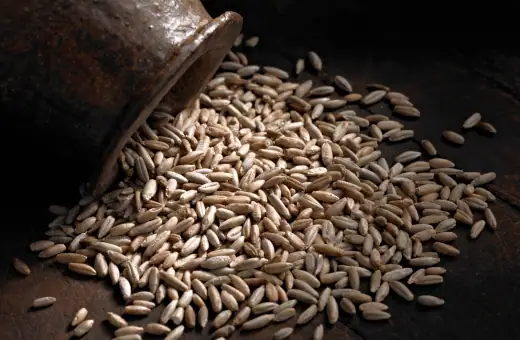
10. Buckwheat Groats
Buckwheat groats are not actually related to wheat, but they do have a nutty taste similar to other whole grains – replace equal amounts (1-to-1) with buckwheat groats when using them as a substitute for Freekah.
11. Kamut
1 part Kamut to 2 parts cooked Freekah Kamut is an ancient grain with a sweet, nutty flavor that can be used as an alternative to Freekah in recipes calling for this grain since they both have similar textures and flavors, although kamut cooks faster.
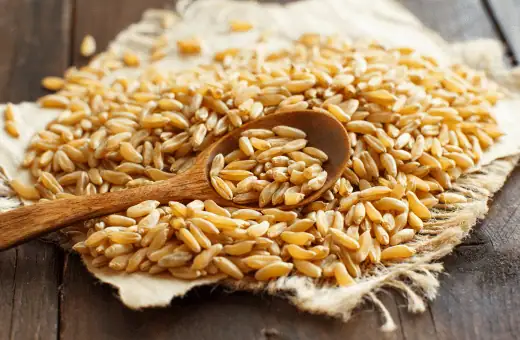
So use half the amount when substituting kamut for cooked Freekah in recipes since kamut takes less time to cook than Freekah. 5-10 (remaining 8 omitted)
Where to buy Freekeh?
If you are looking for where to buy freekeh, there are a few different places you can go. Many specialty food stores carry it, as do some international grocery stores.
You can also order online from many retailers that provide a variety of diverse flavors and types of freekeh.
Learn more: Wheat starch substitute/Trending Gluten-Free Alternative
Conclusion on freekeh substitute
All of these quick substitutes make excellent choices when you don’t have any freekeh on hand but want something with similar flavor and texture as this Middle Eastern grain offers!
Just remember that many of them cook faster than freekeh, so adjust your cooking times accordingly and also adjust your ratio depending on which substitute you choose!
Happy cooking!
FAQs on freekeh substitute
Q1. What grain is similar to freekeh?
Freekeh is similar to other grains such as bulgur, wheat berries, and farro. All of these grains are made from whole-grain wheat harvested when it’s still young and immature. Freekeh, however, is unique in that it is made by roasting the wheat, which adds a distinctive smoky flavor. It also has a chewy texture compared to the softer texture of bulgur or farro.
Q2. Is freekeh the same as bulgur wheat?
No, freekeh and bulgur wheat are not the same. Freekeh is made from green durum wheat that has been roasted and cracked, while bulgur wheat is a type of whole wheat that has been steamed and then dried.
Freekeh has a smoky flavor and chewy texture, while bulgur wheat has a nutty flavor and light, fluffy texture. Because of their different production processes, freekeh also has more fiber than bulgur wheat. It’s also higher in protein than most other grains, as well as being rich in minerals such as iron, calcium, magnesium, and zinc.
Q3. Is freekeh similar to quinoa?
Yes, freekeh is similar to quinoa in terms of texture and flavor. Both are gluten-free grain staples that are high in fiber and protein, making them a great source of nutrition while also helping to keep you full.
Freekeh is unique in that it has a smoky flavor from being roasted over an open flame which adds an interesting depth of flavor compared to quinoa’s more neutral taste. It also cooks faster than quinoa, so it’s great for busy weeknight meals.
Q4. Can I substitute brown rice for freekeh?
Absolutely! Brown rice can be easily substituted for freekeh in most recipes. The taste and texture of the two grains are very similar. However, one important difference to note is that brown rice takes longer to cook than freekeh. Whereas freekeh can often be prepared in around 20-30 minutes, brown rice usually needs about 45 minutes.
Although there may be variations depending on your particular recipe and preparation method, this is typically the case for brown rice. Additionally, another important factor to consider when making the switch is nutritional content.
Freekeh packs a nutrient punch with its high fiber content, B vitamins, and minerals such as iron, zinc, and magnesium. Brown rice is no slouch either when it comes to nutrition; however, it contains more protein than freekeh, along with many essential amino acids.

